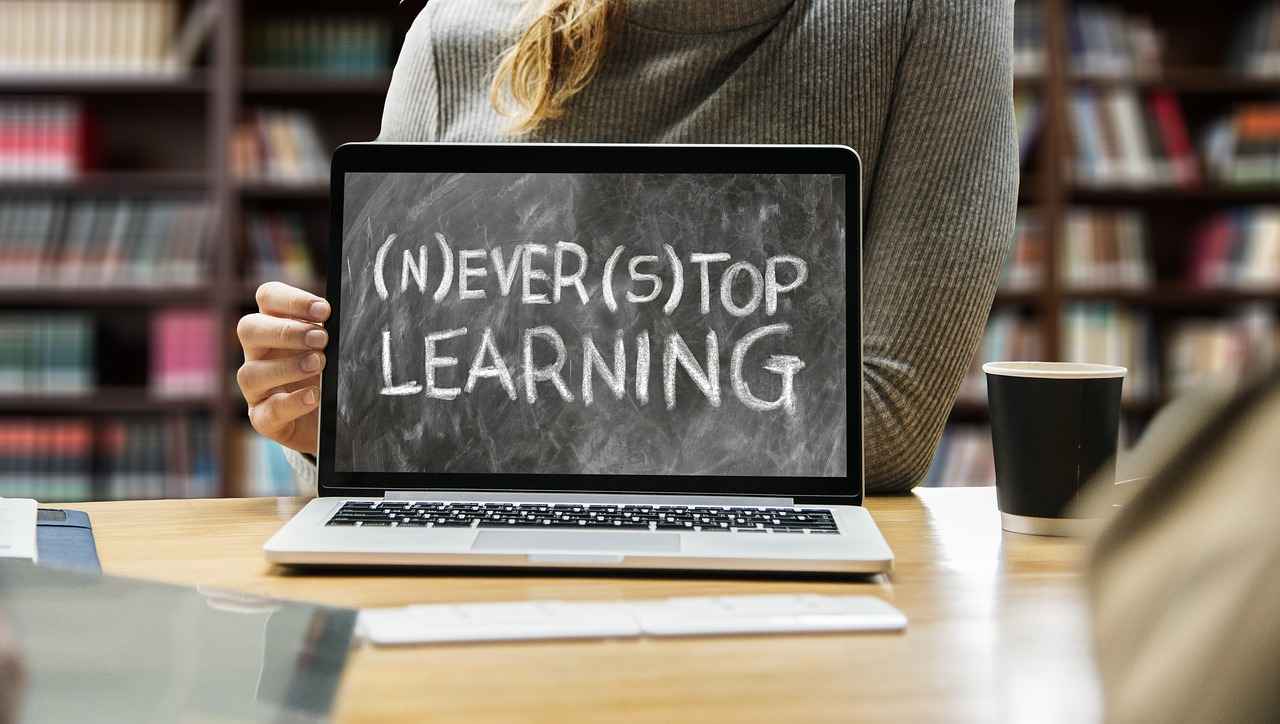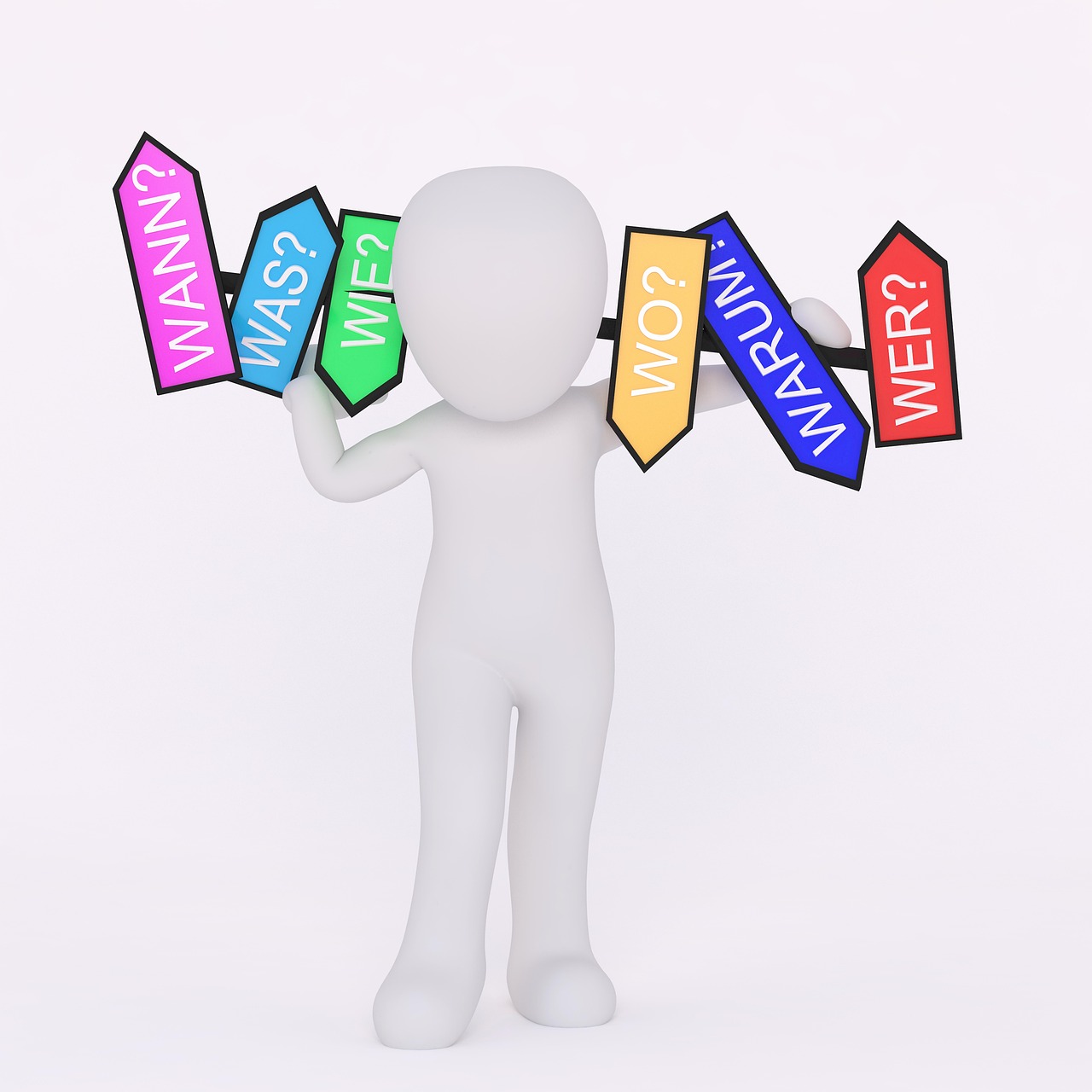This article delves into the significance of repetition in mastering various skills and concepts, offering practical techniques and insights that can be applied across multiple disciplines. Repetition is not just about doing something over and over again; it is a strategic approach to learning that can lead to profound mastery.
Repetition plays a crucial role in the learning process by reinforcing neural pathways in the brain. When we repeat an action or concept, we strengthen the connections between neurons, making it easier to retrieve that information in the future. Studies show that spaced repetition, where information is reviewed at increasing intervals, can significantly enhance retention rates. This technique can be utilized in various learning scenarios, from language acquisition to mastering a musical instrument.
Deliberate practice is a focused, repetitive practice aimed at improving performance. Unlike mere repetition, which can lead to mindless activity, deliberate practice involves setting specific goals and seeking feedback. Research indicates that individuals who engage in deliberate practice tend to achieve higher levels of expertise compared to those who do not. This section will outline how intentional repetition can lead to significant advancements in skill acquisition and mastery.
Incorporating deliberate practice into your daily routine requires a structured approach. Here are some practical steps:
- Establish Clear Objectives: Define what you want to achieve in each practice session.
- Focus on Weaknesses: Identify areas that need improvement and concentrate your efforts there.
- Track Your Progress: Keep a log of your practice sessions to monitor advancements.
Feedback is essential for refining skills and understanding areas for improvement. Constructive feedback can enhance your learning experience and accelerate mastery. Regularly seeking feedback from mentors or peers can provide new perspectives and insights that are invaluable for growth.
Visualization techniques can significantly boost the effectiveness of repetition. By mentally rehearsing skills or concepts, learners can reinforce what they have practiced. For instance, athletes often visualize their performance to enhance muscle memory and execution. This section explores how mental imagery can improve skill retention.
Identifying and avoiding common pitfalls is crucial for effective learning. Here are some mistakes to steer clear of:
- Overcoming the Plateau Effect: Many learners experience a plateau where progress stalls. It’s important to recognize this and adapt your practice strategies accordingly.
- Avoiding Mindless Repetition: Engaging in mindless repetition can lead to burnout. Ensure that your practice sessions are purposeful and engaging.
Staying motivated is essential for long-term mastery. Here are strategies to keep your enthusiasm high:
- Setting Milestones: Recognizing your progress through milestones can boost motivation. Celebrate small victories to reinforce your commitment to learning.
- Finding a Support System: Having accountability partners can significantly enhance your learning experience and keep you on track.
In conclusion, mastering anything in life through repetition is a powerful process that involves understanding the science behind learning, engaging in deliberate practice, utilizing feedback, and maintaining motivation. By applying these techniques, anyone can enhance their learning journey and achieve their goals.

What is the Science Behind Repetition in Learning?
Repetition is a fundamental component of the learning process, acting as a catalyst for growth and mastery in various disciplines. Understanding the science behind repetition allows learners to harness its power effectively, leading to enhanced retention and skill acquisition.
Repetition reinforces neural pathways in the brain, making it easier to retrieve information and perform tasks. When you repeat an action or review information multiple times, the brain strengthens the connections between neurons involved in that task. This phenomenon is known as neuroplasticity, where the brain adapts and reorganizes itself based on experiences and learning.
Studies have shown that repeated exposure to information significantly improves long-term memory retention. The spacing effect, a concept in cognitive psychology, suggests that information is better retained when it is studied over spaced intervals rather than crammed in a short period. This technique helps combat the forgetting curve, which illustrates how quickly we forget information over time without reinforcement.
Incorporating repetition into your learning strategy can take various forms. Here are some effective techniques:
- Active Recall: Test yourself frequently on the material you’ve learned. This process not only reinforces memory but also highlights areas needing more focus.
- Distributed Practice: Spread out your study sessions over time. Instead of one long session, opt for shorter, more frequent reviews of the material.
- Interleaved Practice: Mix different topics or skills during practice sessions. This approach helps improve problem-solving abilities and adaptability.
Moreover, the contextual learning theory emphasizes the importance of the environment in which learning occurs. Repeating information in different contexts can enhance understanding and recall. For instance, studying a language in various settings—like at home, in a café, or during travel—can solidify your grasp on the material.
Furthermore, emotional connections can amplify the effects of repetition. When learners engage with content that resonates with them personally, the likelihood of retention increases. Incorporating stories, visuals, or practical applications can transform mundane repetition into an engaging learning experience.
In summary, the science behind repetition underscores its significance in the learning process. By understanding how our brains respond to repeated exposure and employing various techniques, learners can optimize their study habits, leading to improved retention and mastery of skills. Embracing repetition not only enhances learning but also builds confidence in one’s abilities.

Why is Deliberate Practice Essential for Mastery?
Deliberate practice is a crucial component of achieving mastery in any skill or discipline. Unlike casual practice, which often lacks focus and direction, deliberate practice is characterized by its intentionality and repetition. This section delves into why deliberate practice is essential for mastery and how it can significantly enhance your performance.
What Makes Deliberate Practice Different?
Deliberate practice is not merely about repeating an activity; it involves a structured approach aimed at improving specific aspects of performance. This method requires:
- Focused Attention: Practitioners must concentrate on particular skills or techniques.
- Feedback Mechanisms: Regular feedback helps identify areas needing improvement.
- Incremental Challenges: Gradually increasing the difficulty of tasks to push boundaries.
How Does Repetition Facilitate Skill Acquisition?
Repetition is the backbone of deliberate practice. When you engage in repetitive actions, your brain strengthens the neural pathways associated with those skills. This process leads to:
- Increased Retention: Repeated exposure helps solidify information in long-term memory.
- Enhanced Muscle Memory: Physical skills become more automatic, allowing for better execution.
- Improved Confidence: Mastery through repetition fosters self-assurance in one’s abilities.
Why Is Feedback So Important?
Feedback is an integral part of deliberate practice. It provides the necessary insights to improve performance. Constructive feedback allows learners to:
- Identify Weaknesses: Understanding where improvement is needed can guide practice sessions.
- Adjust Techniques: Modifying approaches based on feedback leads to more effective practice.
- Motivate Progress: Positive reinforcement encourages continued effort and commitment.
How to Incorporate Deliberate Practice Into Your Routine?
To maximize the benefits of deliberate practice, consider the following strategies:
- Set Specific Goals: Define clear, measurable objectives for each practice session.
- Track Progress: Use journals or apps to monitor improvements and setbacks.
- Seek Expert Guidance: Working with a coach or mentor can provide valuable insights and accountability.
Incorporating these elements into your practice routine can lead to significant advancements in skill acquisition. Deliberate practice is not just about putting in hours; it’s about making those hours count through focused, intentional efforts.
In conclusion, the essence of deliberate practice lies in its systematic approach to skill development. By understanding and applying the principles of focused repetition, feedback, and structured goals, anyone can achieve mastery in their chosen field.
How to Implement Deliberate Practice in Your Routine?
Incorporating deliberate practice into your daily routine is essential for achieving mastery in any skill. This structured approach ensures that your practice sessions are not only effective but also goal-oriented. Below are practical steps to help you implement deliberate practice effectively.
A structured approach allows you to focus on specific areas of improvement, making your practice sessions more productive. Without a clear plan, you may find yourself practicing aimlessly, which can lead to frustration and stagnation.
- Define Your Objectives: Start by identifying what you want to achieve in each session. Are you working on a particular technique or trying to improve your speed?
- Make Goals Measurable: Use quantifiable metrics to track your progress. For instance, aim to complete a specific number of repetitions or reduce your error rate.
- Focus on Quality: Ensure that your practice emphasizes quality over quantity. It’s better to practice fewer times with full concentration than to go through the motions.
Monitoring your progress is crucial for improvement. Here are some effective methods:
- Keep a Practice Journal: Document your daily practice sessions, noting what worked and what didn’t. This will help you identify patterns and areas for improvement.
- Use Technology: Consider using apps or software that can track your performance metrics. This data can provide valuable insights into your progress.
- Adjust Based on Feedback: Be open to changing your techniques based on what you learn from your practice sessions. Flexibility is key to effective learning.
Feedback is an essential component of deliberate practice. It helps you refine your skills and understand your areas for improvement. Here’s how to effectively incorporate feedback:
- Seek External Feedback: Engage with coaches or mentors who can provide constructive criticism. Their insights can be invaluable for your growth.
- Self-Assessment: Regularly assess your performance against your goals. This self-reflection can help you identify what needs more attention.
- Peer Review: Practicing with others can also provide immediate feedback. Collaborate with peers to enhance your learning experience.
Visualization can significantly enhance the effectiveness of your deliberate practice. By mentally rehearsing techniques, you can strengthen neural pathways and improve performance. Here are some tips:
- Imagine Success: Visualize yourself successfully executing the skill. This positive reinforcement can boost your confidence.
- Break It Down: Visualize each component of the skill separately. This can help you focus on improving specific aspects of your performance.
- Integrate with Physical Practice: Combine visualization with actual practice to reinforce what you’ve learned.
Maintaining motivation is critical for long-term success. Here are some strategies to keep your enthusiasm high:
- Set Milestones: Break your larger goals into smaller, achievable milestones. Celebrate these small victories to keep your motivation alive.
- Find a Support System: Surround yourself with individuals who share similar goals. This accountability can help you stay committed.
- Reflect on Progress: Regularly review how far you’ve come. Acknowledging your growth can provide a significant motivational boost.
By following these structured steps, you can effectively implement deliberate practice into your routine, ensuring that each session is purposeful and geared towards achieving mastery in your chosen skill.
Setting Specific Goals for Each Practice Session
Setting specific goals for each practice session is a critical component of effective learning and skill mastery. By establishing clear and achievable objectives, you can maintain focus and direction during your practice. This section delves into practical techniques for setting measurable goals that will guide your learning journey.
Why Are Specific Goals Important?
Having specific goals allows you to measure your progress and stay motivated. When you know exactly what you want to achieve, it becomes easier to concentrate your efforts and evaluate your performance. It transforms practice from a vague activity into a structured process aimed at achieving particular outcomes.
- Clarity: Clearly defined goals eliminate ambiguity, helping you understand what is expected of you during each session.
- Focus: Specific goals help you concentrate on the task at hand, reducing distractions and enhancing your ability to learn.
- Motivation: Achieving small, specific goals can boost your confidence and drive, keeping you engaged in the learning process.
How to Set Effective Goals?
To ensure your goals are effective, consider the SMART criteria:
S - Specific: Clearly define what you want to accomplish. M - Measurable: Establish criteria for tracking progress. A - Achievable: Set realistic goals that challenge you but are attainable. R - Relevant: Ensure your goals align with your overall learning objectives. T - Time-bound: Set a deadline to create a sense of urgency.
For example, instead of saying, “I want to improve my writing,” a specific goal would be, “I will write 500 words every day for the next week.” This goal is clear, measurable, achievable, relevant to your writing skills, and has a time frame.
Breaking Down Goals into Smaller Tasks
Another effective technique is to break down larger goals into smaller, manageable tasks. This makes the objectives less daunting and allows for a step-by-step approach to achieving your overall aim. For instance, if your goal is to learn a new language, you might set smaller goals such as:
- Learn 10 new vocabulary words each week.
- Practice speaking with a partner for 30 minutes twice a week.
- Complete one chapter of a language textbook every week.
Tracking Your Progress
Monitoring your progress towards your goals is essential. Keeping a journal or using apps designed for goal tracking can help you stay accountable and motivated. Regularly reviewing your achievements not only highlights your progress but also helps identify areas that may need more focus.
Adjusting Goals as Needed
Flexibility is key when it comes to goal-setting. As you progress, you may find that some goals are too easy, while others may be too challenging. Be prepared to adjust your goals accordingly to ensure they remain relevant and achievable. This adaptability will help maintain your motivation and commitment to your learning journey.
In summary, setting specific, measurable goals for each practice session is a powerful strategy to enhance your learning experience. By applying the SMART criteria, breaking down larger goals, tracking your progress, and remaining adaptable, you can create a structured and effective approach to mastering new skills.
Tracking Progress and Adjusting Techniques
Monitoring your progress is essential for continuous improvement in any skill or discipline. It allows you to identify strengths and weaknesses, ensuring that your efforts are aligned with your goals. Here, we explore various methods to effectively assess your performance and make necessary adjustments to your practice strategies.
Tracking progress provides a clear understanding of how far you have come and what areas require more focus. It also helps in maintaining motivation and accountability, which are crucial for long-term success. By regularly assessing your performance, you can celebrate small victories and stay committed to your learning journey.
- Journaling: Keeping a practice journal allows you to document your daily activities, challenges, and achievements. This reflective practice can help you recognize patterns in your learning.
- Self-Assessment: Regularly evaluate your skills through self-assessment tools or checklists. This can provide insight into your current level of proficiency and highlight areas needing improvement.
- Video Analysis: Recording your practice sessions can be incredibly beneficial. Watching yourself perform can reveal nuances you might miss in real-time, allowing for targeted adjustments.
- Feedback from Others: Seeking constructive feedback from peers or mentors can provide an external perspective on your performance, helping you to identify blind spots.
Once you have assessed your performance, it’s crucial to make adjustments to your practice strategies. Here are some effective methods:
- Adjusting Goals: Based on your progress, you may need to revise your goals. Ensure they remain SMART (Specific, Measurable, Achievable, Relevant, Time-bound) to keep you on track.
- Changing Practice Methods: If a particular technique isn’t yielding results, consider exploring alternative methods. Experimenting with different approaches can often lead to breakthroughs.
- Incorporating Variety: To avoid stagnation, introduce variety into your practice sessions. This could mean changing the environment, varying the exercises, or altering the intensity of your practice.
- Setting New Challenges: Once you achieve a goal, set a new challenge to push your limits further. This keeps your practice dynamic and engaging.
In today’s digital age, numerous tools and applications can assist in tracking your progress. From fitness trackers to learning management systems, technology can provide valuable insights and analytics that enhance your practice. Utilizing these resources can streamline your process and offer real-time feedback.
Establishing a feedback loop is vital for continuous improvement. This involves regularly reviewing your progress, implementing changes, and then reassessing your performance. By creating this cycle, you ensure that your practice remains adaptive and responsive to your needs.
In conclusion, monitoring your progress and adjusting your techniques is not just about tracking numbers; it’s about fostering a mindset of growth and adaptability. By employing these strategies, you can enhance your learning experience and move closer to mastering your chosen skill.
What Role Does Feedback Play in Effective Learning?
Feedback is a critical component in the learning process, serving as a bridge between current performance and desired outcomes. It provides learners with the information needed to refine their skills and understand specific areas that require improvement. This section delves into the multifaceted role of feedback in enhancing your learning experience and accelerating your journey toward mastery.
Understanding the Importance of Constructive Feedback
Constructive feedback is essential for growth. It not only highlights strengths but also pinpoints weaknesses, allowing learners to focus on what needs improvement. When feedback is delivered in a supportive manner, it encourages individuals to take risks and step outside their comfort zones, which is vital for skill development.
How Can Feedback Accelerate Your Learning Process?
- Immediate Corrections: Receiving timely feedback allows learners to make adjustments in real-time, enhancing their ability to grasp new concepts quickly.
- Targeted Improvement: Feedback can guide learners in identifying specific areas that need attention, making practice sessions more effective and focused.
- Boosting Confidence: Positive feedback reinforces good practices, helping to build confidence and motivation to continue learning.
Types of Feedback That Enhance Learning
There are various forms of feedback, each serving a unique purpose:
- Formative Feedback: This type of feedback is provided during the learning process and is aimed at improving performance before final assessments.
- Summative Feedback: Given after a task is completed, this feedback evaluates overall performance and understanding.
- Peer Feedback: Collaborating with peers can provide diverse perspectives, enriching the learning experience and fostering a sense of community.
How to Effectively Utilize Feedback in Your Learning Journey
To maximize the benefits of feedback, consider the following strategies:
1. Be Open-Minded: Approach feedback with a willingness to learn and grow.2. Ask Questions: Clarify any points that are unclear to gain a deeper understanding.3. Reflect on Feedback: Take time to consider how the feedback applies to your practice and what changes you can implement.4. Set Goals: Use feedback to set specific, measurable goals for your next practice session.
Creating a Feedback-Rich Environment
For feedback to be effective, it’s important to cultivate an environment that encourages open communication. This can be achieved by:
- Encouraging Dialogue: Create opportunities for discussions about performance and areas for improvement.
- Fostering Trust: Build relationships that allow for honest feedback without fear of judgment.
- Implementing Regular Check-Ins: Schedule consistent feedback sessions to maintain a continuous improvement cycle.
In conclusion, feedback is not merely a tool for correction; it is a powerful catalyst for learning and growth. By embracing constructive feedback, learners can enhance their skills, accelerate their mastery, and ultimately achieve their learning goals more effectively.

How Can Visualization Techniques Enhance Repetition?
Visualization techniques serve as powerful tools that can significantly enhance the effectiveness of repetition in the learning process. By engaging the mind’s eye, learners can create vivid mental images that reinforce their understanding and retention of information. This section delves into the various ways mental imagery can be employed to bolster learning outcomes.
Understanding the Power of Mental Imagery
Mental imagery involves forming visual representations of concepts, skills, or scenarios within the mind. This practice is not merely about seeing images; it encompasses a full sensory experience, including sounds, feelings, and even smells related to the learning material. Research indicates that when learners visualize information, they activate similar neural pathways as when they physically engage with that information, thereby enhancing memory retention.
How Does Visualization Reinforce Learning?
- Creating Contextual Connections: Visualization helps learners create contextual connections between new information and existing knowledge. By picturing how new concepts fit into a broader framework, learners can better understand and remember them.
- Enhancing Focus: When learners visualize their goals and the steps to achieve them, they can maintain a higher level of focus during practice sessions. This concentration reduces the likelihood of distractions, allowing for more effective repetition.
- Boosting Confidence: Visualization can also improve self-efficacy. By mentally rehearsing skills, learners can build confidence in their abilities, leading to better performance during actual practice.
Applying Visualization Techniques in Repetitive Learning
To effectively integrate visualization into repetitive learning, consider the following strategies:
- Visualize Before Practice: Spend a few minutes before each practice session visualizing the skills or concepts you plan to work on. Imagine yourself performing them successfully.
- Use Guided Imagery: Utilize guided imagery techniques, where you listen to recordings or follow scripts that lead you through mental exercises related to your learning goals.
- Combine Visuals with Physical Practice: As you practice, alternate between physical execution and mental rehearsal. This dual approach can reinforce muscle memory and cognitive understanding.
Using Visualization in Physical Skills Training
For athletes and performers, visualization is an essential part of training. By mentally rehearsing their movements, they can enhance muscle memory and improve overall performance. Studies show that athletes who incorporate visualization into their training routines often achieve better results than those who rely solely on physical practice.
Moreover, visualization can be used to prepare for specific scenarios, such as competitions or performances. By envisioning themselves in these situations, athletes can reduce anxiety and enhance their readiness, leading to improved outcomes.
Conclusion
Incorporating visualization techniques into your repetition practice can lead to significant improvements in learning and skill retention. By harnessing the power of mental imagery, learners can create a more engaging and effective study experience, ultimately paving the way for mastery in any discipline.
Creating Mental Models for Better Understanding
Mental models serve as cognitive frameworks that assist individuals in understanding and navigating complex ideas and systems. By developing these models, learners can simplify intricate information, making it easier to grasp and apply. In this section, we delve into the process of creating effective mental models and how they can enhance your learning experience.
Mental models are essentially internal representations of how things work in the world. They help us to interpret information, predict outcomes, and make decisions. By utilizing mental models, learners can:
- Simplify Complexity: Break down complicated concepts into more manageable parts.
- Enhance Retention: Improve memory recall by associating information with familiar frameworks.
- Facilitate Problem-Solving: Apply learned concepts to new situations effectively.
Creating mental models involves a systematic approach. Here are some practical steps to help you develop your own:
- Identify Core Concepts: Start by pinpointing the fundamental ideas related to the subject you are studying.
- Visualize Relationships: Use diagrams or mind maps to illustrate how different concepts connect and interact.
- Use Analogies: Relate new information to familiar situations or concepts to enhance understanding.
- Refine and Iterate: Continuously update your mental models as you gain new insights or information.
Integrating mental models with repetition can significantly boost your learning efficiency. Here’s how:
- Reinforcement: Repeated exposure to concepts within the context of a mental model reinforces understanding and aids retention.
- Contextualization: Mental models provide context, making repetitive practice more meaningful and less monotonous.
- Enhanced Application: By visualizing how concepts interact, learners can apply their knowledge more effectively in real-world scenarios.
Several well-known mental models can serve as excellent starting points:
- The Feynman Technique: A method for teaching concepts by explaining them in simple terms.
- First Principles Thinking: Breaking down complex problems into their fundamental components.
- Systems Thinking: Understanding how different parts of a system interact and affect one another.
Regularly assessing your mental models is crucial for effective learning. Consider the following:
- Feedback: Seek input from others to identify gaps or inaccuracies in your understanding.
- Real-World Application: Test your models in practical situations to see if they hold up.
- Continuous Learning: Stay open to new information that may require adjustments to your models.
In conclusion, developing robust mental models is a powerful strategy for enhancing your understanding and retention of complex concepts. By integrating these models with repetitive learning techniques, you can create a more engaging and effective learning experience.
Using Visualization in Physical Skills Training
When it comes to mastering physical skills, the integration of visualization techniques plays a pivotal role. Athletes and performers alike have long recognized the power of mental rehearsal in honing their abilities. This section delves into how visualization not only enhances muscle memory but also improves overall execution in various physical disciplines.
Visualization, often referred to as mental imagery, involves creating vivid mental pictures of performing a task or skill. This technique allows individuals to mentally rehearse their actions, which can significantly impact their physical performance. By envisioning themselves successfully executing a skill, athletes can enhance their confidence and refine their techniques.
Muscle memory is developed through repetitive physical practice, but visualization can accelerate this process. When athletes visualize their movements, they engage the same neural pathways that are activated during actual practice. This mental rehearsal solidifies the connections in the brain, making the physical execution smoother and more instinctive.
- Find a Quiet Space: To maximize the effectiveness of visualization, choose a quiet environment free from distractions.
- Use All Senses: Incorporate all your senses in the visualization process. Imagine not only how it looks but also how it feels, sounds, and even smells.
- Be Specific: Visualize the exact movements and techniques you want to master. The more specific your imagery, the more effective it will be.
- Practice Regularly: Just like physical practice, consistency is key. Incorporate visualization into your training routine.
Many elite athletes utilize visualization to prepare for competitions. For instance, gymnasts often visualize their routines in detail, imagining every twist and turn. This practice not only boosts their confidence but also helps reduce anxiety before performances. Similarly, sprinters may visualize the start of the race and their stride patterns, allowing them to execute with precision during the actual event.
Research has shown that visualization can lead to measurable improvements in performance. A study conducted by the University of California found that athletes who practiced visualization alongside physical training demonstrated greater improvements in their skills compared to those who relied solely on physical practice. This highlights the importance of integrating mental techniques into training regimens.
While visualization can be a powerful tool, some athletes may encounter challenges. Difficulty in concentrating or creating vivid mental images can hinder the effectiveness of this technique. To overcome these obstacles, it is essential to practice regularly and gradually build your visualization skills. Engaging in mindfulness or meditation can also enhance focus and clarity during visualization sessions.
To effectively incorporate visualization into your training, start by setting aside dedicated time for this practice. Consider scheduling short sessions before or after physical training. Additionally, keep a journal to track your visualization experiences and progress. This not only helps in refining your technique but also in maintaining motivation.
In conclusion, visualization is a powerful ally in the quest for mastering physical skills. By enhancing muscle memory and improving execution through mental rehearsal, athletes can significantly elevate their performance. As you explore and implement these techniques, remember that consistency and focus are key to unlocking the full potential of visualization in your training.

What Are Common Pitfalls to Avoid When Practicing?
Identifying and avoiding common pitfalls is crucial for effective learning. Many learners, regardless of their discipline, fall into traps that hinder their progress. Recognizing these mistakes is the first step towards mastering skills and achieving optimal results. This section will delve into some of the most prevalent pitfalls and provide strategies to navigate around them.
- Neglecting to Set Clear Goals: One of the most significant errors is failing to establish specific, measurable goals for practice sessions. Without clear objectives, it is easy to lose focus and direction.
- Overlooking the Importance of Feedback: Many learners shy away from seeking feedback, believing they can self-assess effectively. However, constructive criticism is vital for identifying areas needing improvement.
- Engaging in Mindless Repetition: Repeating tasks without thought can lead to stagnation. Engaging with the material actively is essential for growth.
- Ignoring Rest and Recovery: Continuous practice without breaks can lead to burnout and decreased performance. Balancing practice with adequate rest is crucial.
To steer clear of these common pitfalls, consider implementing the following strategies:
- Establish Specific Goals: Define what you aim to achieve in each practice session. For example, if you are learning a musical instrument, set a goal to master a specific piece or technique.
- Seek Regular Feedback: Actively seek input from mentors, peers, or coaches. Constructive feedback can provide insights that you may overlook on your own.
- Engage in Reflective Practice: After each session, take time to reflect on what worked and what didn’t. This practice will help you adjust your techniques and stay engaged.
- Prioritize Recovery: Incorporate rest days into your practice schedule. This will not only prevent burnout but also allow your brain and body to consolidate what you’ve learned.
Maintaining engagement during practice is essential for effective learning. Here are some techniques:
- Vary Your Practice Routine: Change up your practice activities to keep things interesting. This could involve mixing different skills or using various tools and resources.
- Incorporate Gamification: Turn your practice into a game. Set challenges, track your progress, and reward yourself for achieving milestones.
- Join a Community: Engaging with others who share your interests can provide motivation and accountability. Participate in forums, groups, or classes where you can share experiences and learn together.
By understanding and avoiding these common pitfalls, learners can create a more effective and enjoyable practice experience. Implementing these strategies will not only enhance skill acquisition but also foster a lifelong love for learning.
Overcoming the Plateau Effect in Skill Acquisition
Many learners encounter a frustrating phase known as the plateau effect, where their progress in skill acquisition seems to stall. This phenomenon can be disheartening, leading to feelings of inadequacy and decreased motivation. However, understanding the reasons behind this plateau and employing effective strategies can help you break through and continue your journey toward mastery.
The plateau effect often arises when learners reach a level of proficiency that feels comfortable. At this stage, the brain may no longer engage in the same level of active learning as before, resulting in a lack of noticeable improvement. Understanding the psychological and physiological factors contributing to this phenomenon is essential for overcoming it.
- Change Your Routine: One effective way to break through a plateau is to alter your practice routine. Introduce new techniques or vary your practice environment to stimulate your brain and encourage learning.
- Set New Challenges: Setting more challenging goals can reignite your motivation. Instead of practicing the same skills, work on more advanced techniques or incorporate elements that push your limits.
- Focus on Fundamentals: Sometimes, returning to the basics can provide a fresh perspective. Spend time honing fundamental skills, which can lead to improvements in more complex areas.
- Seek Feedback: Constructive feedback from peers or mentors can illuminate areas for improvement that you may not have noticed. Engaging in discussions about your practice can provide new insights and strategies.
- Incorporate Mindfulness: Practicing mindfulness during your sessions can enhance your focus and engagement. Being present allows you to identify specific areas needing improvement.
Repetition is a powerful tool in overcoming plateaus. However, it is crucial to employ effective repetition techniques to ensure that your practice is meaningful and productive:
1. Deliberate Practice: Focus on specific aspects of your skill, practicing them with intent.2. Spaced Repetition: Spread out your practice sessions over time to enhance memory retention.3. Varied Practice: Mix different skills and techniques in your practice sessions to promote adaptability and prevent boredom.
Staying motivated during a plateau can be challenging. Here are some strategies to keep your spirits high:
- Celebrate Small Wins: Acknowledge your progress, no matter how minor. Celebrating small victories can boost your confidence and motivation.
- Connect with Others: Engaging with a community of learners can provide support and encouragement. Sharing experiences can remind you that plateaus are a common part of the learning process.
- Visualize Success: Use visualization techniques to imagine yourself overcoming challenges and achieving your goals. This mental rehearsal can reinforce your commitment and drive.
In summary, experiencing a plateau in skill acquisition is a normal part of the learning journey. By understanding its causes and implementing targeted strategies such as changing your routine, seeking feedback, and employing effective repetition techniques, you can break through these barriers. Remember to maintain your motivation by celebrating progress and connecting with others on a similar path. With persistence and the right approach, you can continue to develop your skills and achieve mastery.
Avoiding Mindless Repetition: How to Stay Engaged
When it comes to mastering any skill, the role of repetition is undeniable. However, engaging in mindless repetition can lead to disengagement and burnout, hindering your progress rather than enhancing it. Thus, it is essential to find ways to keep your practice sessions both engaging and purposeful. Here are some effective strategies to maintain your motivation and ensure continuous improvement.
Mindful practice is crucial because it not only helps you retain information better but also enhances your overall learning experience. When you engage mindfully, you are more likely to notice subtle improvements and areas that need attention. This leads to a more fulfilling practice session.
- Establish Clear Objectives: Start by defining specific, measurable goals for each practice session. This could involve mastering a particular technique or improving your speed. Clear objectives help maintain focus and give you a sense of direction.
- Incorporate Variety: Change up your routine regularly. This could mean altering your practice environment, trying new techniques, or even switching between different skills. Variety keeps your mind engaged and prevents monotony.
Engagement can be significantly enhanced through various techniques:
- Gamification: Turn your practice into a game. Set challenges for yourself, track your scores, and reward yourself for achieving milestones. This adds a fun element to repetition.
- Visualization: Use visualization techniques to mentally rehearse your skills. This not only reinforces learning but also keeps your mind actively engaged in the process.
- Mindfulness Meditation: Incorporate mindfulness exercises before your practice sessions. This helps clear your mind and prepares you to focus on the task at hand.
Constructive feedback is vital for improvement. Here’s how to effectively seek and utilize feedback:
- Find a Mentor or Coach: Having someone experienced to guide you can provide valuable insights and keep you accountable.
- Self-Assessment: Regularly assess your performance. Record your practice sessions and review them to identify areas for improvement.
After each practice session, take time to reflect on what you learned. Ask yourself:
- What went well?- What could I improve?- How did I feel during the practice?
Reflection helps solidify your learning and gives you a clearer understanding of your progress.
A positive mindset is essential for staying engaged. Here are some strategies:
- Celebrate Small Wins: Acknowledge your progress, no matter how small. Celebrating these victories can boost your motivation and reinforce your commitment.
- Stay Curious: Approach your practice with a sense of curiosity. Explore new ideas and techniques that can enrich your learning experience.
By implementing these strategies, you can transform your practice sessions from mindless repetition into engaging and purposeful activities. Remember, the key to mastery lies not just in repetition but in the quality of your practice.

How to Maintain Motivation During the Learning Process?
Maintaining motivation is a critical aspect of achieving long-term mastery in any skill or subject. Without consistent enthusiasm, the learning journey can become tedious and overwhelming. In this section, we will explore effective strategies to keep your motivation levels high, ensuring that your commitment to learning remains strong throughout your journey.
Motivation acts as the driving force behind your learning efforts. It not only fuels your desire to acquire new skills but also helps you overcome challenges and setbacks. When you are motivated, you are more likely to engage in deliberate practice, seek out feedback, and remain committed to your goals.
Establishing clear and achievable goals is a fundamental strategy for maintaining motivation. Break down your larger objectives into smaller, manageable milestones. This approach allows you to experience a sense of accomplishment regularly, which can significantly boost your enthusiasm. Here are some tips:
- Define Specific Goals: Ensure your goals are specific and measurable. Instead of saying, “I want to improve,” try “I want to practice for 30 minutes every day.”
- Set Timeframes: Assign deadlines to your goals to create a sense of urgency and accountability.
- Celebrate Small Wins: Acknowledge your progress by celebrating achievements, no matter how small. This positive reinforcement can fuel your motivation.
Having a support system can greatly influence your motivation levels. Surrounding yourself with like-minded individuals who share similar goals can create a positive environment for learning. Consider the following:
- Find Accountability Partners: Partner with someone who can hold you accountable for your goals. Regular check-ins can help you stay on track.
- Join Learning Communities: Engage with online forums or local groups focused on your area of interest. Sharing experiences and challenges can provide encouragement and new insights.
- Seek Mentorship: A mentor can offer guidance, advice, and support, helping you navigate obstacles and stay motivated.
Self-reflection is a powerful tool for sustaining motivation. Taking time to evaluate your progress can help you identify what works and what doesn’t. Here’s how to incorporate self-reflection into your routine:
- Keep a Learning Journal: Document your thoughts, challenges, and successes. This practice can provide insights into your learning journey and help you stay focused.
- Regularly Assess Your Goals: Revisit your goals periodically to ensure they still align with your aspirations. Adjust them as necessary to keep them relevant and motivating.
- Visualize Your Success: Spend a few moments visualizing what achieving your goals looks like. This mental imagery can reinforce your commitment and enthusiasm.
Burnout can be a significant barrier to maintaining motivation. To prevent this, it’s essential to find a balance between practice and rest. Here are some strategies:
- Incorporate Variety: Change up your practice routine to keep things fresh and engaging. Try new techniques, tools, or settings.
- Schedule Breaks: Ensure you take regular breaks to recharge your mind and body. A well-timed break can enhance your overall productivity.
- Stay Curious: Keep your passion alive by exploring related topics or skills. This can reignite your enthusiasm and provide new perspectives.
By implementing these strategies, you can maintain high levels of motivation throughout your learning journey. Remember, motivation is not a constant state; it fluctuates. However, with the right techniques and support, you can cultivate a resilient mindset that keeps you committed to your goals.
Setting Milestones and Celebrating Achievements
Setting milestones and celebrating achievements are essential components of any learning journey. Recognizing progress not only reinforces your commitment but also significantly boosts your motivation. In this section, we will delve deeper into the importance of these practices and how they can enhance your overall learning experience.
Milestones serve as markers of progress that help you gauge how far you’ve come in your learning journey. They break down larger goals into manageable chunks, making the overall process less overwhelming. By establishing clear milestones, you create a roadmap that guides you towards your ultimate objectives.
Celebrating small victories is crucial for maintaining motivation. Each time you achieve a milestone, no matter how small, it reinforces your sense of accomplishment. This sense of achievement can be a powerful motivator, pushing you to continue striving for your next goal. Here are some effective ways to celebrate:
- Reward Yourself: Treat yourself to something special, whether it’s a favorite snack, a day off, or a small gift.
- Share Your Achievements: Tell friends, family, or peers about your progress. Sharing your successes can create a supportive network that encourages further growth.
- Reflect on Your Journey: Take time to review what you’ve learned and how you’ve grown. This reflection can reinforce your commitment to your goals.
When setting milestones, consider both short-term and long-term goals. Short-term milestones could include completing a specific chapter in a book, while long-term goals might involve mastering a skill or concept. Here’s how to structure your milestones:
1. Identify your ultimate goal.2. Break it down into smaller, achievable milestones.3. Set deadlines for each milestone.4. Regularly assess your progress and adjust as needed.
Staying committed to your learning journey requires constant motivation and reflection. Here are some strategies to help you maintain focus:
- Visualize Success: Picture yourself achieving your ultimate goal. Visualization can enhance your determination to reach your milestones.
- Keep a Learning Journal: Document your progress, setbacks, and reflections. This journal can serve as a motivational tool and a reminder of how far you’ve come.
- Engage with a Community: Join groups or forums related to your learning objectives. Engaging with others can provide additional motivation and support.
In conclusion, recognizing your progress through milestones and celebrating achievements is not just about marking the completion of tasks; it’s about reinforcing your commitment to learning. By acknowledging each step you take, you create a positive feedback loop that fuels your motivation and drives you towards mastery. Remember, every small victory counts, and each milestone reached brings you closer to your ultimate goals.
Finding a Support System for Accountability
In the journey of mastering new skills, the importance of having a reliable support system cannot be overstated. can significantly enhance your learning experience, providing the necessary motivation and encouragement to keep you on track. This section delves into the various ways accountability partners or groups can contribute to your success.
Accountability plays a crucial role in maintaining focus and commitment. When you share your goals with others, you create a sense of responsibility that can drive you to achieve them. Studies have shown that people who engage with accountability partners are more likely to reach their objectives than those who work in isolation.
- Encouragement: Having someone to cheer you on during challenging times can make a significant difference in your motivation levels.
- Constructive Feedback: Accountability partners can provide valuable insights and perspectives that you may not have considered, helping you refine your techniques.
- Shared Resources: Collaborating with others allows you to exchange tips, tools, and resources that can enhance your practice.
- Regular Check-ins: Scheduled meetings or check-ins create a structured environment where you can discuss progress and setbacks, helping you stay focused.
There are various forms of support systems you can consider:
- Study Groups: Joining a group of like-minded individuals can foster a collaborative learning environment.
- Mentorship: Finding a mentor who has expertise in your area of interest can provide invaluable guidance and support.
- Online Communities: Engaging with online forums or social media groups allows you to connect with others who share similar goals.
- Accountability Apps: Leveraging technology through apps designed for goal tracking can help you stay accountable to your commitments.
Selecting the right person to hold you accountable is essential. Here are some tips:
- Shared Goals: Find someone who has similar objectives to ensure that you can support each other effectively.
- Trustworthiness: Choose someone you can trust to provide honest feedback and encouragement.
- Availability: Ensure that your partner has the time and commitment to engage regularly.
Being part of a group can amplify the benefits of accountability:
- Diverse Perspectives: Groups bring together individuals with different experiences and insights, enriching the learning process.
- Collective Motivation: The energy and enthusiasm of a group can be contagious, keeping everyone engaged and motivated.
- Networking Opportunities: Connecting with others can lead to new opportunities, collaborations, and friendships.
In conclusion, establishing a support system for accountability is a powerful strategy for enhancing your learning experience. Whether through partners or groups, the encouragement, feedback, and shared resources can keep you motivated and focused on your goals. By actively engaging with others, you create a dynamic environment that fosters growth and mastery in your chosen field.
Frequently Asked Questions
- What is the role of repetition in learning?
Repetition is a powerful tool in learning as it strengthens neural pathways in the brain. By repeatedly practicing a skill or concept, you enhance retention and make it easier to recall information when needed.
- How can I incorporate deliberate practice into my routine?
To effectively implement deliberate practice, set clear, specific goals for each session. Focus on areas that need improvement and track your progress. This structured approach ensures you make the most of your practice time.
- Why is feedback important in the learning process?
Feedback provides essential insights into your performance, helping you identify strengths and areas for improvement. Constructive feedback accelerates your learning journey by guiding you on how to refine your skills.
- What are some common pitfalls to avoid when practicing?
Avoid mindless repetition and the plateau effect, where your progress stalls. To stay engaged, keep your practice sessions purposeful and varied, ensuring you remain motivated and focused.
- How can I maintain motivation while learning?
Setting milestones and celebrating small achievements can significantly boost your motivation. Additionally, having a support system for accountability can keep you on track and provide encouragement throughout your learning journey.




